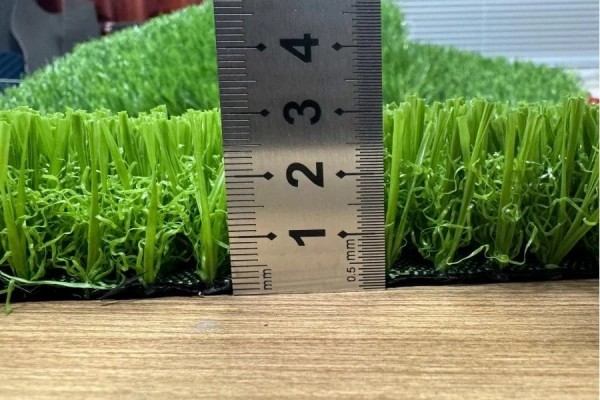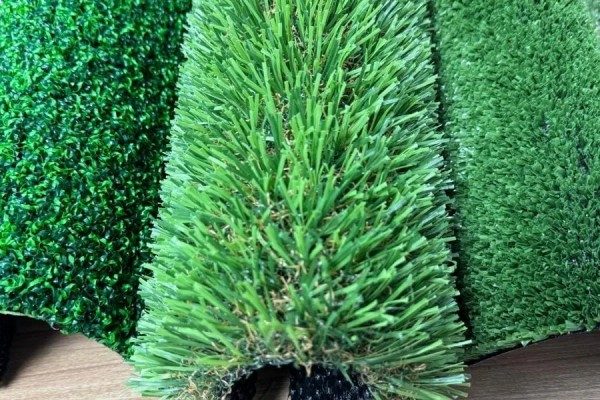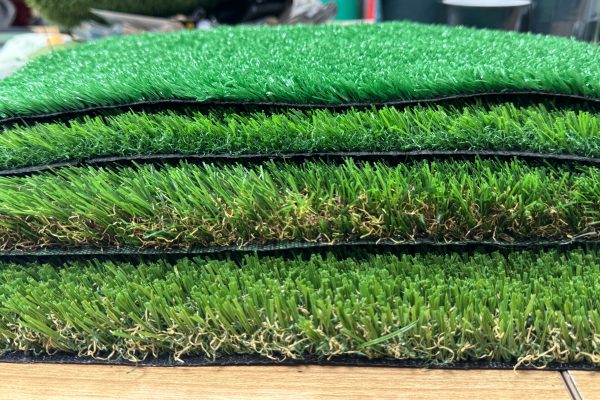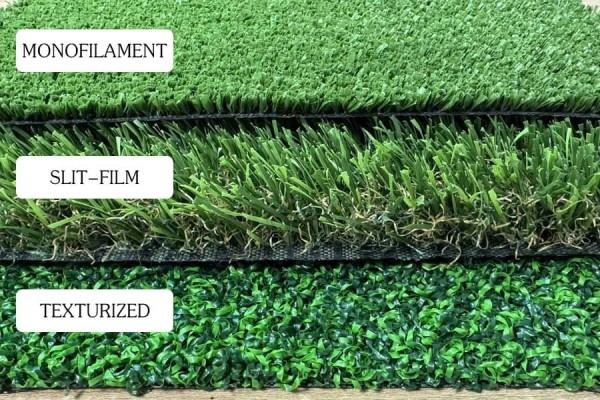Confused by artificial turf specs? Choosing the wrong product can lead to costly project failures. Understanding these key terms is essential for making the right purchase and ensuring success.
Pile height is the length of the turf fibers, while face weight is the weight of the yarn per square unit. A taller pile height often means a
higher face weight. But, the density of the stitches is also very important for a quality product.

Many people get confused by all the technical terms on a specification sheet. It is a common problem. I have seen buyers focus on one number while ignoring another, which leads to disappointment. But it does not have to be this complex. In this post, I will break down these terms one by one. I want to give you the confidence to analyze any spec sheet and choose the perfect turf for your project. Let’s start with the most common pair of terms: pile height and face weight.
What is the difference between face weight and pile height?
Do these two turf specifications seem the same? Mixing them up can lead to buying a turf that looks sparse or wears out too quickly, wasting your investment.
Pile height measures the length of the grass blades, usually in millimeters. Face weight measures the mass of the yarn itself in a set area, like grams per square meter. Simply put, one is a measure of length, and the other is a measure of material quantity.

Understanding this difference is critical when you are buying artificial turf. You cannot just look at one number without the other. I remember a client who wanted a "lush" 50mm pile height for a community field. He focused only on that number. The supplier offered him a very low price, but the face weight was incredibly low. When the turf arrived, the blades were long, but it was so sparse you could easily see the backing. The field looked thin and it flattened almost immediately after installation.
This experience taught us a valuable lesson. A tall pile height is not good if the face weight is too low. The turf will lack density and resilience. On the other hand, a short pile height with a high face weight will be very dense and durable. You must analyze them together to understand the turf’s actual quality and feel.
Pile Height vs. Face Weight
| Scenario | Pile Height | Face Weight | Resulting Turf Quality |
|---|---|---|---|
| A | High | Low | Long but sparse blades; looks thin, flattens easily. |
| B | Low | High | Short but very dense blades; durable and resilient. |
| C | High | High | Long and dense blades; lush, high-quality, resilient. |
| D | Low | Low | Short and sparse blades; usually for very low-cost or specific uses. |
Is high pile or low pile turf better?
Are you trying to decide between a tall, lush-looking turf and a short, neat one? Making the wrong choice can seriously affect the area’s playability, durability, and maintenance needs.
Neither choice is better overall; the best option depends entirely on the intended use. High pile (40-60mm) is excellent for sports like football, offering cushioning. Low pile (10-25mm) is superior for tennis or golf, where a true ball roll is essential.

The "best" pile height is always related to the application. There is no single answer. For my customers who are building professional football fields, we almost always choose a pile height between 50mm and 60mm. This height allows for the right amount of sand and rubber infill. This infill is crucial for player safety. It provides shock absorption and supports the turf fibers1, helping them stay upright.
However, for a local tennis club I worked with, a 50mm pile would have been a disaster. The ball would not bounce correctly. For them, we chose a very dense 15mm pile height. This provided a fast, consistent surface for ball bounce, which is exactly what tennis players need. When you are deciding, always think about the primary use of the surface first. That will guide you to the right pile height.
Choosing Pile Height by Use Case
| Feature | High Pile (40mm – 60mm) | Low Pile (10mm – 25mm) |
|---|---|---|
| Best For | Football, Rugby, general multi-sport fields | Tennis, Padel, Golf, Hockey |
| Feel | Soft, cushioned, grass-like | Firm, fast, uniform |
| Maintenance | Requires regular brushing and infill top-ups | Easier to clean, less complex maintenance |
| Infill Needs | Requires significant sand and/or rubber infill | Requires minimal or only sand infill |
Does dtex affect weight?
You may see "Dtex2" on a specification sheet and wonder what it means for your project. Ignoring Dtex can lead you to buy a turf that is not as durable as you expect.
Yes, Dtex directly affects weight. Dtex is a unit of measurement for yarn, showing the weight in grams of 10,000 meters of that yarn. A higher Dtex means a thicker, heavier, and more durable fiber. This, in turn, increases the turf’s overall face weight.

Think of Dtex like the thickness of a thread. A higher Dtex means you have a thicker, stronger, and heavier thread. This is very important for the durability of your artificial turf. The face weight of a turf is a result of several factors, and Dtex is a major one. The key factors are pile height, stitch rate (how close the rows of yarn are), and Dtex. If you increase any of these, the face weight will also increase.
I often tell buyers to pay close attention to Dtex when comparing products. Imagine you have two turf samples. Both have a 50mm pile height and the same face weight. But one has a Dtex of 12000, and the other has a Dtex of 8800. The turf with the 12000 Dtex has thicker, stronger blades. It will stand up better to heavy foot traffic and last longer. The other grass must have a higher stitch rate to reach the same face weight, but its individual fibers are weaker. For high-traffic areas like a school playground or a football pitch, a higher Dtex is a smart investment in longevity.
Dtex Impact on Yarn Quality
| Scenario | Dtex | Pile Height | Resulting Yarn Quality |
|---|---|---|---|
| High Durability | High (e.g., 12000+) | High | Strong, thick, resilient blades. Excellent for high-traffic sports. |
| Standard Use | Medium (e.g., 8000-11000) | High | Good balance of resilience and cost. Suitable for many uses. |
| Lower Tier | Low (e.g., < 8000) | High | Thinner, weaker blades. May flatten quickly under stress. |
Conclusion
Understanding pile height, face weight, and Dtex is crucial for choosing the right artificial turf. Analyze them together to guarantee your project’s quality and long-term success.
_画板-1.png)
_画板-1.png)